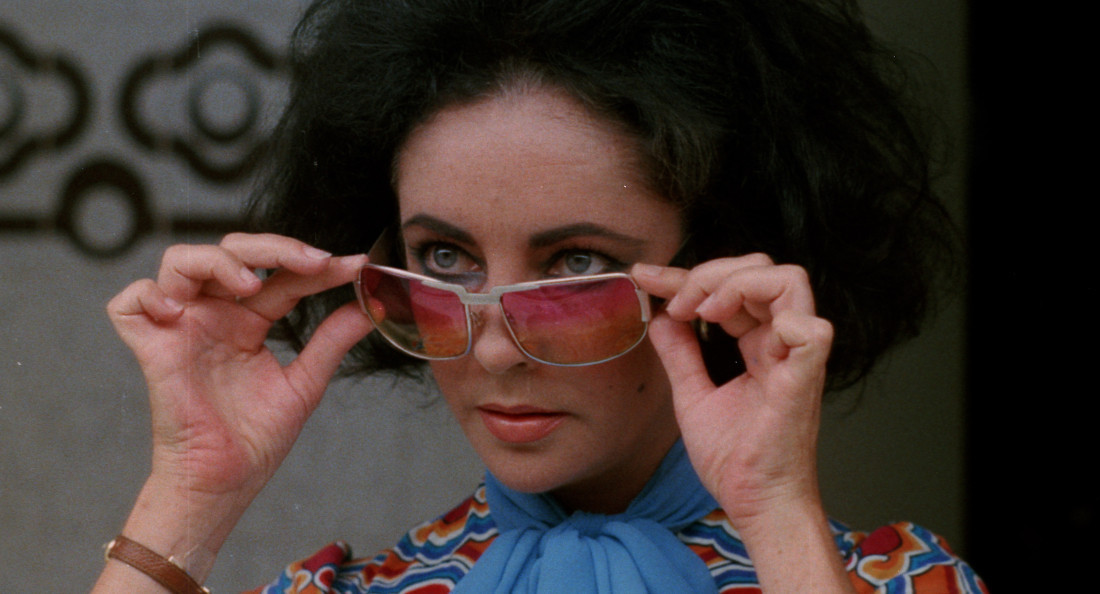Identikit (The Driver’s Seat)
★★ out of 5
Plays at Cinematheque Sept. 21, 24 and 25
Celebrating the 10th anniversary and latest expanded edition of Kier-La Janisse’s book House of Psychotic Women, Cinematheque will show a series of films showcasing starlets at their most neurotic, the first of which is Giuseppe Patroni Griffi’s Identikit (1974), or The Driver’s Seat for North American audiences.
In it, Lise (Elizabeth Taylor), a mercurial dame, decides to decompress following an alluded-to breakdown and leaves London for Rome. That she never returns from this trip is made clear through the non-linear narrative, which alternates between her sabbatical and an INTERPOL squad interrogating those she meets along the way.
Like many psychological thrillers of this ilk, something is wrong, and the characters in the film aren’t afraid to pointedly observe that. Initially, it’s hard to tell if the sense of apprehension is a product of Lise’s unstable condition, but her gaudy dress and movie-star looks are a clean metaphor for the incongruity she has with her environment.
Taylor maintains some of the grace and air of nobility responsible for her cinematic apotheosis long before Cleopatra made it clear, but she clings to it desperately. With no clever lighting doing her favours, her famous amethyst eyes dull into a cloudy murk. At times, her performance vacillates from invoking genuine pathos to a self-consciousness inevitable for a fallen star in a European arthouse production. She doesn’t fit in, but it’s likely a deliberate aim of the picture.
The film benefits from some inspired shot composition, and the sparse, discordant piano score bolsters the film’s uncanny atmosphere. But moments of genuine tension in this psychological drama are few. Their even dispersion throughout the 100-minute runtime staves off abject tedium. Mostly, the film ambles between quotidian scenes.
The direction barely outstrips the scripting. Identikit becomes less convincing as the characters make obvious assertions moments after viewers figure things out for themselves. Vacuous dialogue pads the runtime where a shrewder picture would explore Lise’s neurosis.
Instead, scenes show her expressions of mild consternation toward the motley crew of characters that share the screen with her, including Bill (Ian Bannen), a lecherous businessman. Her static character arc makes for flat viewing. Throughout the film, she searches for someone, presumably a lover. Why? By film’s end, her singular motivation proves unsatisfying in its tautology.
The film makes suggestions of political relevance with scenes of urban unrest as a backdrop. Produced during Italy’s terroristic Years of Lead, bombs go off and assassinations are attempted, although it never coalesces thematically with the plot.
The Italian hallmark of poor dubbing is excusable here, even when it exacerbates the bizarreness of Andy Warhol’s few scenes in the film. He is as glassy eyed and stiff as archival photos of him betray.
Mrs. Fiedke (Mona Washbourne), one of Lise’s companions, inquires: how will she sense the presence of the one she’s looking for?
“Not really a presence,” she retorts. “The lack of absence, that’s what it is.”
A very tidy summation indeed.
Published in Volume 77, Number 03 of The Uniter (September 22, 2022)







